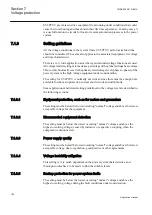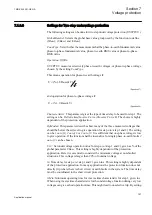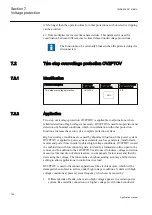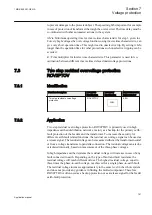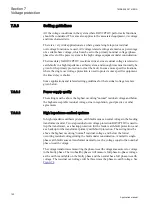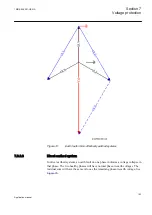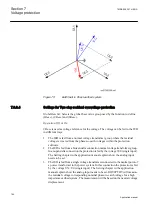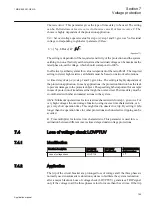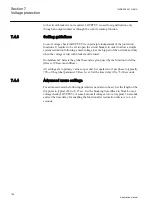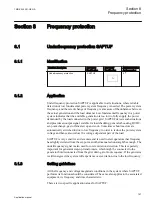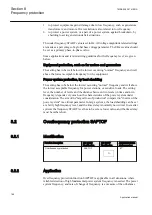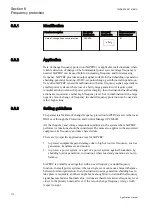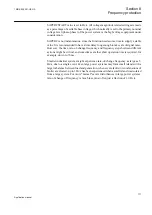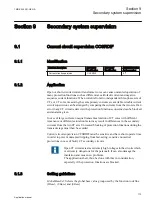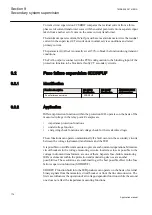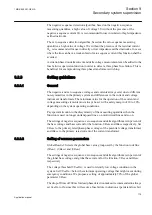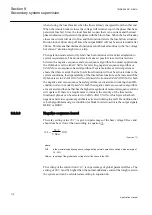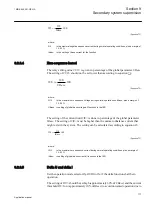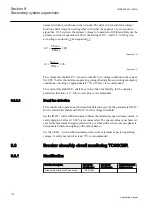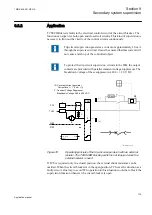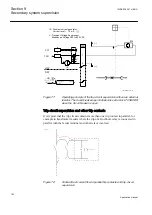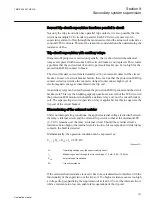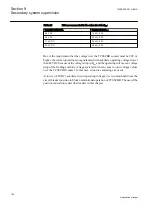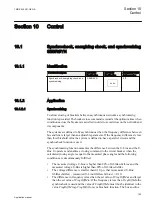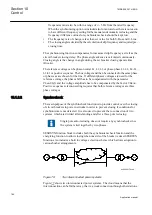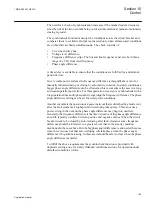
8.3.1
Identification
Function description
IEC 61850
identification
IEC 60617
identification
ANSI/IEEE C37.2
device number
Rate-of-change frequency protection
SAPFRC
df/dt
><
SYMBOL-N V1 EN
81
8.3.2
Application
Rate-of-change frequency protection (SAPFRC), is applicable in all situations, where
reliable detection of change of the fundamental power system voltage frequency is
needed. SAPFRC can be used both for increasing frequency and for decreasing
frequency. SAPFRC provides an output signal, suitable for load shedding or generator
shedding, generator boosting, HVDC-set-point change, gas turbine start up and so on.
Very often SAPFRC is used in combination with a low frequency signal, especially in
smaller power systems, where loss of a fairly large generator will require quick
remedial actions to secure the power system integrity. In such situations load shedding
actions are required at a rather high frequency level, but in combination with a large
negative rate-of-change of frequency the underfrequency protection can be used at a
rather high setting.
8.3.3
Setting guidelines
The parameters for Rate-of-change frequency protection SAPFRC are set via the local
HMI or or through the Protection and Control Manager (PCM600).
All the frequency and voltage magnitude conditions in the system where SAPFRC
performs its functions should be considered. The same also applies to the associated
equipment, its frequency and time characteristic.
There are two specific application areas for SAPFRC:
1. to protect equipment against damage due to high or too low frequency, such as
generators, transformers, and motors
2. to protect a power system, or a part of a power system, against breakdown by
shedding load or generation, in situations where load and generation are not in
balance.
SAPFRC is normally used together with an overfrequency or underfrequency
function, in small power systems, where a single event can cause a large imbalance
between load and generation. In such situations load or generation shedding has to
take place very quickly, and there might not be enough time to wait until the frequency
signal has reached an abnormal value. Actions are therefore taken at a frequency level
closer to the primary nominal level, if the rate-of-change frequency is large (with
respect to sign).
Section 8
1MRK 505 291-UEN A
Frequency protection
170
Application manual
Summary of Contents for Relion REQ650
Page 1: ...Relion 650 series Breaker protection REQ650 Application manual ...
Page 2: ......
Page 20: ...14 ...
Page 26: ...20 ...
Page 48: ...42 ...
Page 82: ...76 ...
Page 90: ...84 ...
Page 160: ...154 ...
Page 178: ...172 ...
Page 264: ...258 ...
Page 288: ...282 ...
Page 302: ...296 ...
Page 330: ...324 ...
Page 338: ...332 ...
Page 339: ...333 ...

